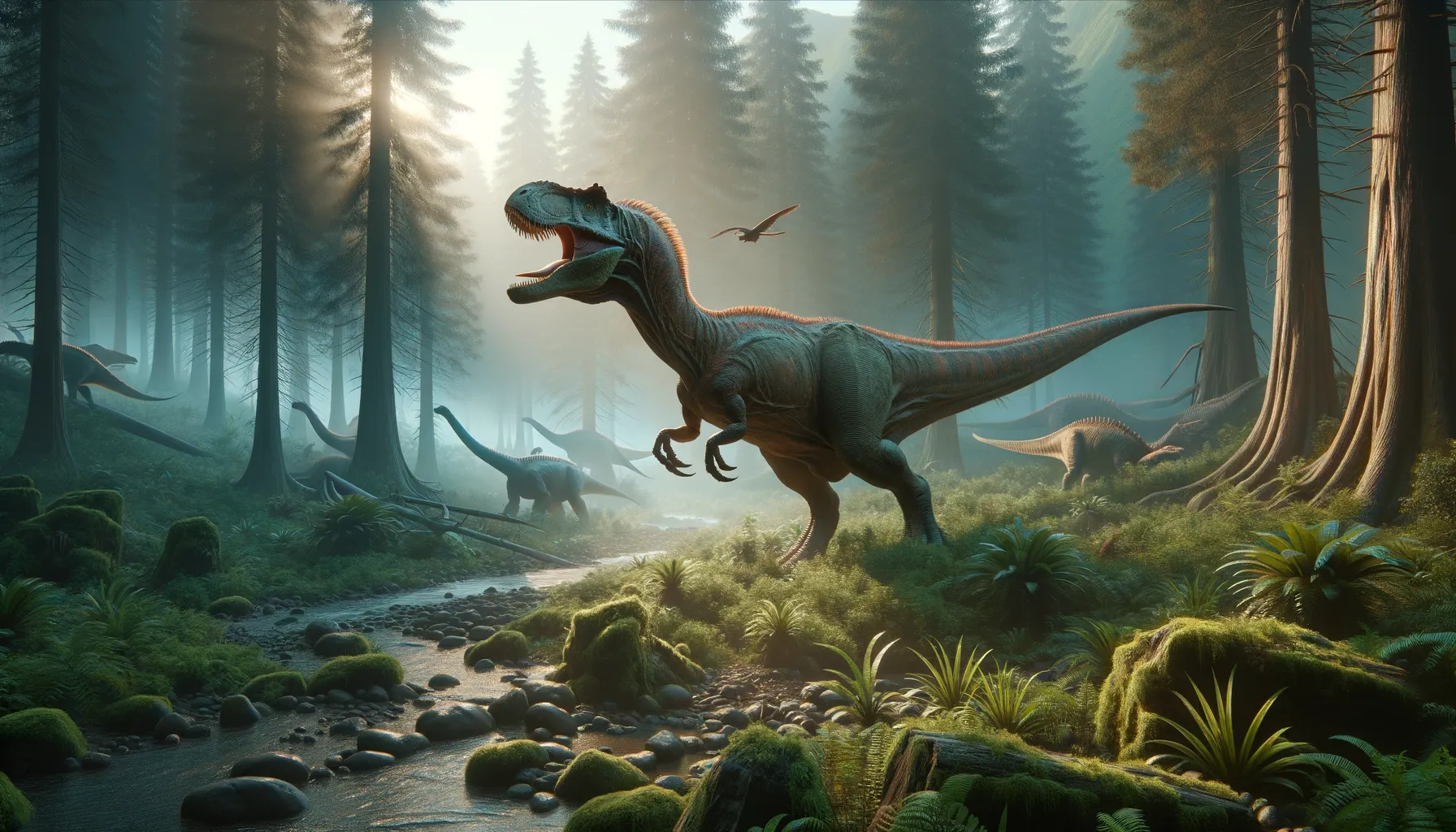
Shanshanosaurus
Agile hunter of the Cretaceous plains.
Period
Cretaceous
Length
Around 4 meters long.
Height
Approximately 1 meter at the hips.
Weight
Likely around 250 kg.
Shanshanosaurus was a small carnivorous dinosaur from the Late Cretaceous period, known to have lived in what is now China. It likely had a lightweight build, leading to theories that it was an agile hunter. Its fossil remains suggest similarities to other smaller Theropods, contributing valuable information to the understanding of dinosaur evolution and adaptation during that time. Its discovery adds to the diverse picture of Late Cretaceous ecosystems.
Diet
Shanshanosaurus was a carnivore, likely preying on small animals. Its diet included small vertebrates such as lizards and mammals. It may have also scavenged for food.
Hunting
It possibly hunted in a solitary manner, utilizing speed and stealth. With keen senses, it could have ambushed prey, relying on quick bursts of speed to catch them.
Environmental challenges
Shanshanosaurus faced challenges from larger predators and changing environments. The late Cretaceous period was marked by significant geological activity, leading to fluctuations in climate and habitat. Competition for resources would have also been a significant challenge. Adaptation to these changes was crucial for its survival.
Speed
Possibly moderate for its size; details unclear.
Lifespan
Estimated to be several decades.
First discovery
Discovered in the Xinjiang region of China in the 1970s.
Fun Facts
- Shanshanosaurus was a small dinosaur that lived during the Late Cretaceous period about 70 million years ago.
- This dinosaur is believed to have been a carnivore, meaning it primarily ate meat.
- Shanshanosaurus fossils were discovered in the Shanshan area of Xinjiang, China, which is where it gets its name.
- Despite its small size, Shanshanosaurus was agile and probably a fast runner, possibly hunting in packs.
- Its large eyes suggest it had good vision, which would have been beneficial for spotting prey or avoiding predators.
- The name 'Shanshanosaurus' means 'Shanshan lizard.'
- Shanshanosaurus has only been discovered in one geographical area, making it a unique find for paleontologists.
Growth and Development
Shanshanosaurus likely grew rapidly during its early years. Juveniles might have had different feeding habits compared to adults to avoid competition. Its growth patterns would have been influenced by environmental factors and resource availability. Like many dinosaurs, it possibly underwent growth spurts followed by periods of slower growth.
Habitat
Shanshanosaurus inhabited semi-arid regions with sparse vegetation. The landscape would have included open areas to facilitate hunting and hiding spots offering protection from predators. Water sources were likely scattered, influencing its territorial range. These areas would have provided both challenges and opportunities for survival.
Interaction with other species
Shanshanosaurus may have interacted with other small Theropods and herbivores. Competition for food would have driven interactions with other carnivores. Its presence in the ecosystem influenced the dynamics of the food web, impacting prey populations. Interactions with larger predators may have determined its movements and hunting strategies.
Natural lifespan
Its natural lifespan was likely several decades.
Reproduction
Reproduction was likely oviparous, with eggs laid in nests. Parental care might have been minimal, with young being relatively independent. Hatchlings probably matured quickly to fend for themselves. Mating behaviors and reproductive strategies would have been influenced by environmental conditions.
Social behaviour
Shanshanosaurus might have been solitary or lived in loose groups. Social interactions were possibly limited to mating and territorial disputes. Communication could have involved vocalizations or physical displays. Its behavior was likely adapted to its role as a predator.
Fossil locations
Fossil remains of Shanshanosaurus were found in the Shanshan area of Xinjiang, China. These remains have provided crucial insights into its anatomy and lifestyle. The region is known for a wealth of Cretaceous fossils, contributing to the understanding of that era's biodiversity. Discoveries serve as key evidence for the distribution of Theropods in Asia.
